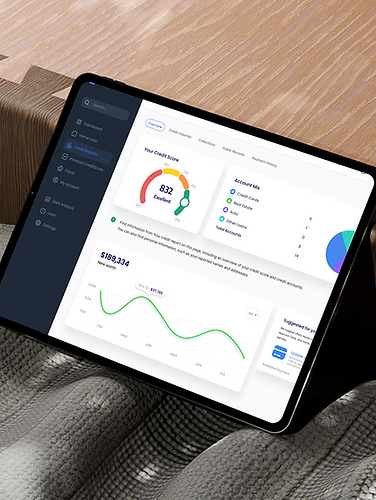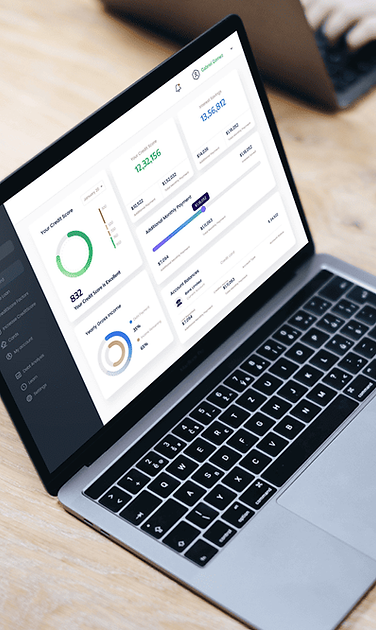Whether you're an independent loan advisor or a fast-growing brokerage, our custom solutions help you automate everything from borrower onboarding to lender matching, proposal generation, compliance checks, and real-time reporting.
We help modernize outdated workflows so you can move faster, reduce risk, and win more business — all while delivering a seamless experience to your clients.

.png)
What Is Loan Brokerage Software?
Loan brokerage software is a digital platform that helps brokers manage the entire lending process — from initial borrower intake to final payout.
It acts as a central hub to:
Collect loan applications
Match borrowers to the most suitable lenders
Generate proposals and contracts
Ensure compliance
Track deals in real-time
Instead of managing everything in spreadsheets, email threads, or disconnected CRMs, you get a cloud-based loan broker CRM system that runs your operations intelligently.
If you're still managing deals manually or using off-the-shelf tools not built for brokers, you're likely facing:

Manual Data Entry:
Repetitive admin tasks slow you down.

Disconnected Systems:
No central platform for borrower and lender communication

Paperwork Bottlenecks:
Endless PDFs and documents handled by hand

Compliance Pressure:
Risk of audit failure or non-compliance

Lost Deals:
Clients drop off due to poor user experience or slow response
Our Loan Brokerage Platform — Built Just for You
We don’t sell generic software. We design and develop tailor-made platforms based on your business model, regulatory needs, and client expectations. Whether you need an automated CRM, an AI lender matching engine, or a fully custom loan origination platform — we’ve got you covered.
AI-Powered Chatbot for Borrower Intake
Capture and qualify new leads automatically with a smart loan application chatbot.
-
Ask pre-set questions (loan type, amount, property info)
-
Auto-fill borrower forms
-
Validate identity and business details
-
Works 24/7 on your website or portal
AI Lender Matching Engine
Instantly match borrowers with the right lenders using machine learning.
-
Cross-reference borrower profiles with lender criteria
-
Rank and score lenders for best-fit
-
Increase match accuracy from 60% to 85%
-
Save hours per deal and reduce rejection rates
Automated Loan Proposal Generation
Generate pre-filled, lender-specific loan proposals in seconds.
-
Auto-calculate advance amounts, discount rates, and fees
-
Customize by lender templates
-
Share via secure link or downloadable PDF
-
Manual overrides and AI suggestions available
Delight clients with a secure borrower portal to view their loan journey, upload documents, and track progress.
-
Reduce support emails and calls
-
Provide live updates and alerts
-
Built-in chatbot and help center
-
Custom-branded for your business
Compliance & Deal Analytics
Stay audit-ready with built-in regulatory compliance features and performance tracking dashboards.
-
Track KYC/AML compliance for every application
-
Get deal lifecycle visibility (submission → approval → funding)
-
Analyze average deal time, drop-off rates, and lender performance
-
Export reports for your CRM or regulator
Integrations & Scalability
We can integrate with:
Credit bureaus (Creditsafe, Experian)
CRM tools (HubSpot, Salesforce)
Accounting software
Lender APIs
ID verification tools
%20(2).png)
%20(1).png)
Our Agile Delivery Process
Our loan broker platform development approach is transparent, collaborative, and fast. Most platforms go live in 12 weeks.
.jpg)
Discovery & Planning
Edit this paragraph to add any content you would iike to share about your company or service.
UX Design
Custom UI tailored to your borrower flow
Backend & Frontend Development
AI, automation, and integration
Testing & QA
Extensive user and system testing
Launch & Support
Deployment and ongoing improvements
What You Can Expect
Metric
Before Our Platform
After Implementation
Time to Process Applications
45 mins
10 mins
Client Drop-Off Rate
40%
<10%
Lender Match Accuracy
~60%
85%+
Monthly Deals Closed
12
18–20
-
What does web development entail?Web development involves the creation, building, and maintenance of websites or web applications. This process includes tasks such as designing web pages, programming functionalities, and ensuring the website's performance and usability.
-
What are the key components of web development?Key components of web development include web design, programming languages, database management, server-side scripting, client-side scripting, and content management systems (CMS).
-
What is the difference between web development and web design?Web development involves the technical aspects of building and maintaining websites or web applications, including programming and functionality implementation. Web design focuses on the visual aspects of a website, such as layout, color schemes, and typography.
-
What is responsive web design?Responsive web design is an approach to designing and developing websites that ensure optimal viewing and interaction across various devices and screen sizes. It involves creating flexible layouts and using CSS media queries to adjust the design based on the device's screen size.
-
How important is search engine optimization (SEO) in web development?SEO is crucial in web development as it helps improve a website's visibility and ranking in search engine results pages (SERPs). Proper implementation of SEO techniques ensures that the website attracts organic traffic and reaches its target audience effectively.
-
What programming languages are commonly used in web development?Commonly used programming languages in web development include HTML (Hypertext Markup Language), CSS (Cascading Style Sheets), JavaScript, PHP (Hypertext Preprocessor), Python, and Ruby.
-
What is the difference between front-end and back-end development?Front-end development involves building the user interface and client-side functionality of a website, while back-end development focuses on server-side logic and database management to support the front-end functionality.
-
What is a content management system (CMS)?A content management system (CMS) is a software application that allows users to create, manage, and publish digital content on websites without requiring technical expertise. Popular CMS platforms include WordPress, Joomla, and Drupal.
-
How does web development support e-commerce businesses?Web development plays a critical role in e-commerce by enabling the creation of online stores, product catalogs, shopping carts, payment gateways, and order management systems to facilitate online transactions and sales.
-
What role does quality assurance play in web development?Quality assurance ensures that websites and web applications meet specified requirements, function properly, and provide a seamless user experience. It involves testing for bugs, errors, and usability issues to ensure the overall quality and reliability of the web product.

